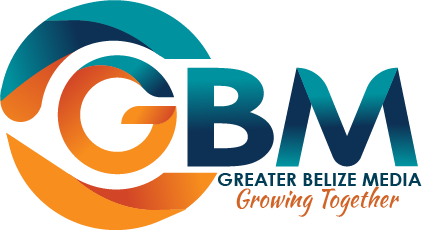Belize Has the Food, But Can Everyone Access It?
We all know food is a basic human right, and Belize produces enough to feed its people. But despite that, food insecurity still affects families across districts and ethnic groups. So, what’s being done to close those gaps? And how can Belize contribute to the wider conversation on food security across Latin America and the Caribbean? Well, with its strong production capacity and potential for value-added goods, Belize is in a unique position to lead. News Five’s Paul Lopez takes a closer look at how the country could play a key role in shaping regional food security.
 Paul Lopez, Reporting
Paul Lopez, Reporting
When it comes to food security, Belize is doing pretty well, at least on paper. The Food and Agriculture Organization defines it as everyone, everywhere, having access to enough safe and nutritious food. And according to Minister of Agriculture and Food Security, Jose Abelardo Mai, Belize checks that box, especially when it comes to availability. Take sugar, for example. Despite the ongoing challenges in the industry, Belize produces way more sugar than it actually consumes. So, the issue isn’t about having enough food, it’s about making sure it reaches the people who need it most.

Jose Abelardo Mai
Jose Abelardo Mai, Minister of Agriculture and Food Security
“There are about fifteen thousand tons of sugar consumed in the country. I think it is about twelve thousand tons white sugar, and fifteen thousand tons brown sugar. Of the twelve thousand tons white sugar, the industrial companies use six thousand tons, half. The coffee drinkers and the cake mixers use six thousand tons. We export fifteen thousand to the U.S. and the other goes to Europe. If we have to keep our sugar at home we will have to do so, but I do not foresee us importing sugar like last year. We have to feed our country first then worry about the rest.”
 When we talk about food security, it’s not only about having enough food on the shelves, it’s about making sure people can actually afford and access it. That’s where things get more complex. Access to nutritious food depends on having the right resources, and for many Belizeans, that’s still a challenge. Christian Orellana, Manager of Census Survey at the Statistical Institute of Belize, and his team have been digging into the data to understand just how deep food insecurity runs across the country. Their findings are helping shape the conversation on how Belize can better support its people.
When we talk about food security, it’s not only about having enough food on the shelves, it’s about making sure people can actually afford and access it. That’s where things get more complex. Access to nutritious food depends on having the right resources, and for many Belizeans, that’s still a challenge. Christian Orellana, Manager of Census Survey at the Statistical Institute of Belize, and his team have been digging into the data to understand just how deep food insecurity runs across the country. Their findings are helping shape the conversation on how Belize can better support its people.

Christian Orellana
Christian Orellana, Manager of Census Survey, S.I.B
“So what is food insecurity? Food insecurity is when they have lack of access to food, either physically because of geographic location they cannot access the food, or due to lack of money.”
To determine the severity of food insecurity in Belize, the SIB relies on people’s direct responses to eight questions about their access to food.

Christian Orellana
“We asked them questions starting from if the households worried that they will not have enough food to eat due to lack of money or enough resources, also if they didn’t have the variety they thought or if they have sufficient food or if they ran out of food.”
 Food insecurity isn’t the same everywhere in Belize. A 2021 study by the SIB found that over half of households in Toledo were struggling to put food on the table. And in Stann Creek, the numbers were even worse, reporting the highest level of severe food insecurity. The data, based on real-life experiences, shows which districts and ethnic groups are most affected. More findings are on the way.
Food insecurity isn’t the same everywhere in Belize. A 2021 study by the SIB found that over half of households in Toledo were struggling to put food on the table. And in Stann Creek, the numbers were even worse, reporting the highest level of severe food insecurity. The data, based on real-life experiences, shows which districts and ethnic groups are most affected. More findings are on the way.
Christian Orellana
“In terms of ethnicity we see that the Maya reported the highest moderate or severe food insecurity at fifty-seven-point zero nine percent. The ethnicity that reported the lowest was the Mennonite at twenty-one-point one percent. So the Mennonite reported the lowest. In terms of severity we see the Maya with an eight-point seven three percent with severe insecurity, the household ran out of food. And again, with the lowest we saw the Mennonite.”
 In 2021, Maya communities in Toledo faced the biggest struggles with food access, according to national data. Stann Creek had the highest rate of severe food insecurity. But things may be changing. New findings are on the way and the conversation is growing beyond Belize’s borders. Economist Dr. Roger Hosein says Belize has the potential to become a key food supplier for the region.
In 2021, Maya communities in Toledo faced the biggest struggles with food access, according to national data. Stann Creek had the highest rate of severe food insecurity. But things may be changing. New findings are on the way and the conversation is growing beyond Belize’s borders. Economist Dr. Roger Hosein says Belize has the potential to become a key food supplier for the region.

Roger Hosein
Roger Hosein, Professor of Economics, University of West Indies
“Belize play a tremendous role in regional food security and we need to encourage them to continue to do so, and make use of the treaty of Chaguaramas and its membership in CARICOM, and keep making use of the opportunities in CARICOM and beyond CARICOM. I think you raise an important point. Belize plays a tremendous role and you have to give credit where credit is due and encourage you all to be one of the important food baskets of the region.”
 So, whether it is raw agricultural products or value-added products, locally produced food can play a significant role in decreasing moderate and severe food insecurity in Latin America and the Caribbean. Minister of Foreign Affairs and Foreign Trade, Francis Fonseca, weighed in.
So, whether it is raw agricultural products or value-added products, locally produced food can play a significant role in decreasing moderate and severe food insecurity in Latin America and the Caribbean. Minister of Foreign Affairs and Foreign Trade, Francis Fonseca, weighed in.

Francis Fonseca
Francis Fonseca, Minister of Foreign Affairs
“We have a strong partnership in CARICOM and agreements we have established that provide for improved trade, especially in the area of food security. There is a strong commitment in CARICOM where everybody is trying to create greater food security and a part of that plan is that we do more trade among ourselves in CARICOM. So that is an important priority for CARICOM.”
The numbers from the Statistical Institute of Belize aren’t just for the record, they’re a roadmap. They help decision-makers understand where the biggest food insecurity challenges are and how to fix them. And with Belize’s growing role in regional food supply, this data could shape policies that not only feed our own people, but support food security across Latin America and the Caribbean. Reporting for News Five, I am Paul Lopez.






Facebook Comments